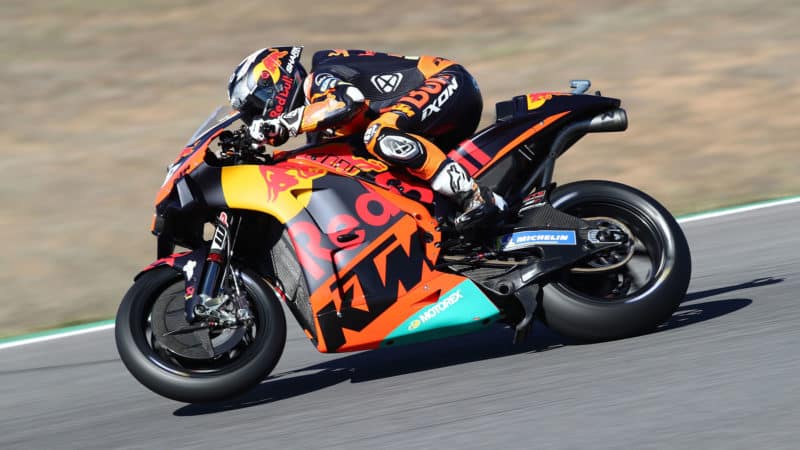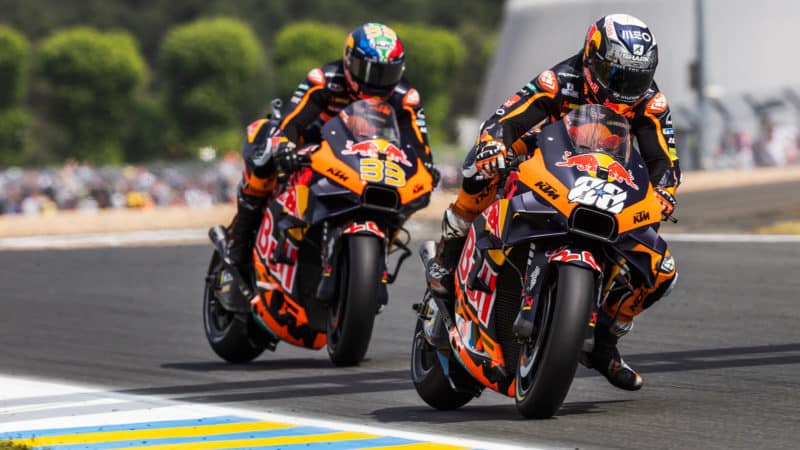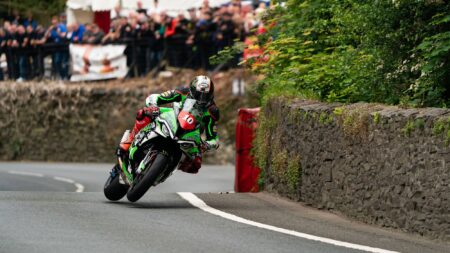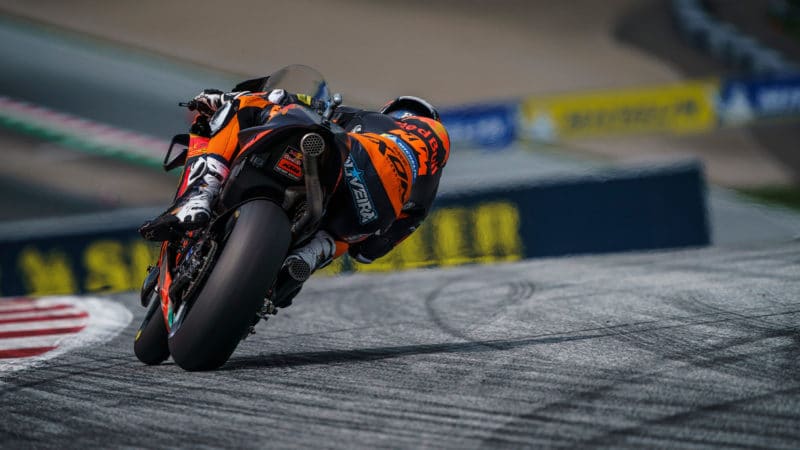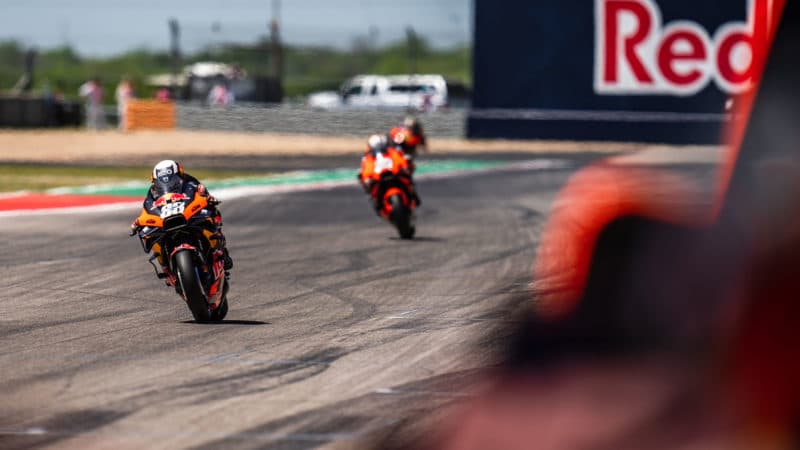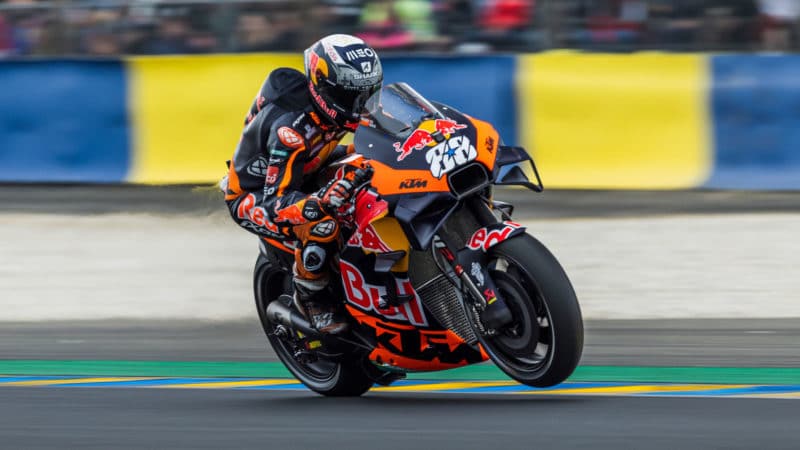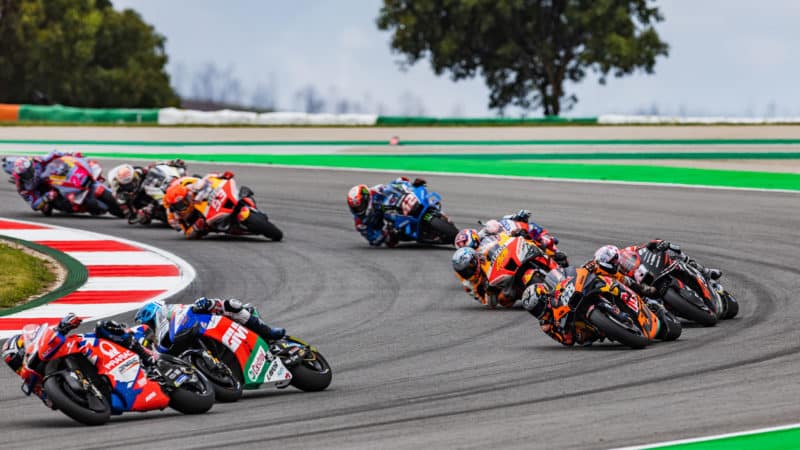We tried it once in 2019, we tested a thumb brake, but the pressure wasn’t enough.
So you really murder the rear brake?
Yes, and we couldn’t squeeze out enough pressure with the thumb brake.
What about engine-braking – do you like a lot of engine-brake?
I like the bike to stop! We’ve been trying to get a bit more into this area because over the years we’ve had quite a stable physical setting with the [slipper] clutch and the engine-brake electronics. We think we could find a bit more in this area, so we are starting to explore it more.
I don’t particularly like the bike to be sideways in the entry of the corner. I want the stopping, but I don’t want the sliding. In my case the sliding compromises my entry speed a lot, so I need to keep the bike going straight a little bit longer, instead of just tipping into the corner. If the bike is sliding it’s taking you out wide, so it’s not helping you to turn.
You say you don’t like the sliding but you’re using a lot of rear brake.
The rear brake is just to stop the bike, although sometimes with the rear brake together with the setting we can provoke a little bit of sliding, which is helpful at Austin, for example.
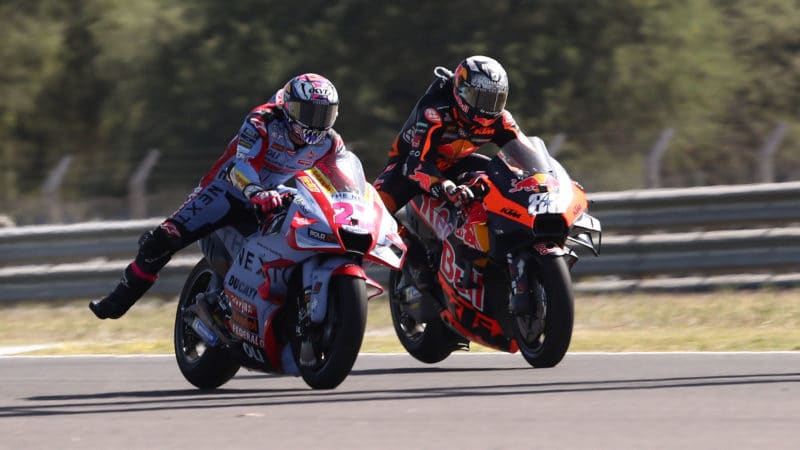
Enea Bastianini dangling his right leg on the brakes. Oliveira can’t because he still uses a foot brake lever
Red Bull
So you’ve taken away all the speed with the brakes, then you’re just using the rear brake as a turning tool.
Exactly, just a little bit at the last moment.

